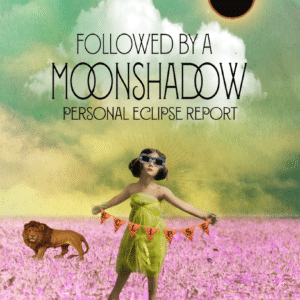I’m taking this week off from my weekly planetary highlights column, partly to celebrate my birthday! For a civilian, the completion of another cycle around the Sun just means it’s time for cake. But an astrologer like me gets excited for another reason: I get to draw a brand new Solar Return chart for the coming year.

What is a Solar Return chart?
Once each year, within a day or two either side of your birthday, the Sun returns to the precise degree, minute, and sign of the zodiac that it occupied at your birth. A chart that’s cast for this moment is called a Solar Return chart, and it summarizes key themes, interests, and challenges for your life in the coming twelve months.
Return charts can be calculated for each planet, though some are more practically useful for individuals than others. For instance, Pluto has a cycle of 246 years to complete a transit around the Sun; nobody will experience a personal Pluto return (although the United States will experience its first in 2022-2023!). But returns of the Moon (every 29.5 days), Mars (every two year), Jupiter (every 12 years), and Saturn (every 29 years) are commonly used by astrologers to outline your response to that planet’s themes during its cycle.
Get Your Solar Return chart
- Go to Astro.com. If you don’t have an account, you can sign up for a free one or simply use the site as a guest.
- Select Charts & Calculations > Extended Chart Selection
- Select Chart type > Solar Return Chart
- (Optional, but easier-to-read chart – Select: Chart drawing style: Anglo)
- Start date: Start a few days before your birthday; the moment of the exact Solar Return can occur up to a couple of days before your birthday, because the Sun’s cycle doesn’t match up exactly with the calendar.
- To change location: Default settings > Reference place > Modify settings
- Button: Click here to show the chart
Which location to use?
This is a topic of spirited controversy among astrologers. Some favor using your birth location for each Solar Return chart, even if you’re living someplace else. Others (myself included) use the location where you currently make your home. Still others feel you should use the place where you spend the exact moment of the sun’s return, even if you’re only there for a short time. You can experiment with all three and see what resonates for you. I’ve usually found that I can make an argument for either the birth location or my current residence, but that the birthday location (if different) doesn’t usually speak to me once I’ve left that place.

Interpreting the chart
1. Start with the Sun!
It will, of course, always be at the same degree in the same sign as it was at your birth. But note its house placement in the return chart; this describes areas where your energy will be focused this year, and personal development is most likely.
Also, what aspects does the Sun make to other planets in the Solar Return chart? Those planets represent people, situations, or opportunities that help or hinder you (depending on the quality of the aspect) in exercising your will throughout the year.
- Moon: Home and family, women, dietary changes, health
- Mercury: Intellect, learning, skills, credentials, communication, short trips
- Venus: Pleasure, relationships, money, possessions, self-esteem, women
- Mars: Action, anger, assertiveness, impulse, work, men, cars, battles, self-defense
- Jupiter: Chance, fortune, overseas travel, higher education, teaching, foreigners, unfamiliar experiences
- Saturn: Career, reputation, ambition, advancement, maturity, responsibility, discipline, authority, older people
- Uranus: Change, the unexpected, inspiration, magnetism, science and technology, fame
- Neptune: Faith, illusions and delusions, seeking truth, music and the arts, confinement
- Pluto: Power, control, extremes, intense experiences, jealousy, extreme wealth, law enforcement
Finally, make note of the Sun’s transits through the Solar Return chart. For instance, my Solar Return chart for 2019 in San Diego has the Moon at 18º43′ degrees of Libra. Checking my ephemeris, I see that the transiting Sun will reach that degree on October 12, 2019. That’s a day when matters related to the Moon, including home, health, emotional well-being, relationships with women and with the public, will be particularly emphasized for me.
2. What planet rules the Solar Return Ascendant?
The placement of this planet and its transits (including retrograde periods) throughout the year are usually very descriptive of what drives you this year. In my 2019 Solar Return, Mars rules the Ascendant and is placed very prominently on the 10th house cusp. I know I’ll be feeling especially driven to achieve career goals this year and may find myself in a position of having to defend my authority or reputation! I can also track the transits of Mars through the year (it will reach 19 deg. Aries by my next Solar Return) to find out what parts of the chart are activated through the year. Also – check the HOUSE of your birth chart where the Solar Return Ascendant’s exact degree and sign falls; that will be a very sensitive degree throughout the year, and that house’s matters will be especially important.
3. Are there planets close to the angles of the Solar Return chart?
If a planet falls within a few degrees either side of the Ascendant, Descendent, IC, or MC (1st, 7th, 4th, or 10th house cusps), its influence is considered particularly strong. If the planet is approaching the angle from a cadent house (12, 6, 3, or 9), the date when it reaches the angle exactly by transit is considered significant.

The Solar Return chart captures an important moment in your personal year and uses it to symbolically represent the coming twelve months of your life. It gives a simple, easy-to-use snapshot of your personal year, but the information it yields can also be seen using other techniques, such as progressions, transits, profections, and the like. Prominent Mars in the Solar Return? You should find it emphasized in the other techniques you use to look at the chart, too. For instance, Mars, so strong in my Solar Return chart for this year, recently entered Scorpio in my secondary progressions and will receive important aspects from transiting Saturn, Neptune, and Pluto in the next twelve months. The Solar Return chart just calls attention to Mars in another way, making sure I don’t overlook the red planet (as though anyone could).
I hope you enjoy looking at your own Solar Return chart! And let us know in comments which location you used and any other insights you might have gained from it. And if you want a really interesting analysis of your Solar Return for the year, you might be interested in this report with text by astrologer Mary Shea, whose work with Solar Returns I really admire.
 Learn more about your Solar Return with Mary Shea’s Solar Return report!
Learn more about your Solar Return with Mary Shea’s Solar Return report!Writing and images © 2019-25 by April Elliott Kent
For more on this week’s planetary news, listen to my podcast!







